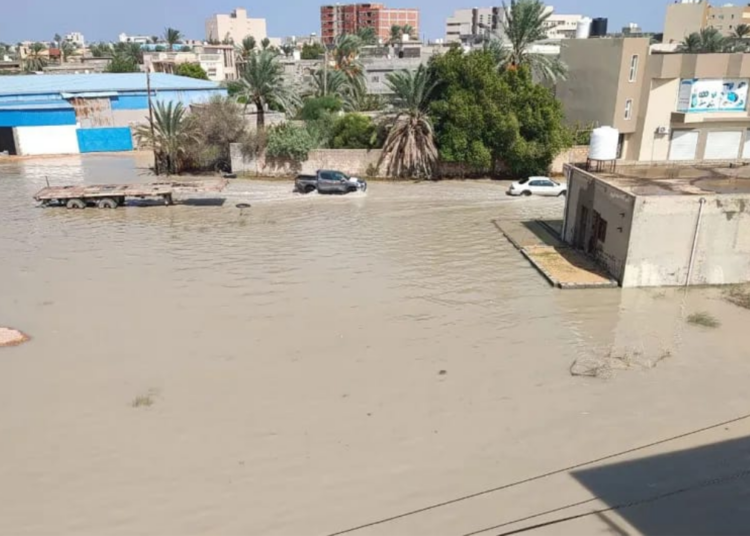Around 2,000 people have died and about 10,000 were believed to be missing after Storm Daniel dumped so much rain on Libya’s northeast, leading to the collapse of two dams and sending water flowing into already inundated areas.
“The death toll is huge and around 10,000 are reported missing,” Tamer Ramadan, head of the International Federation of Red Cross and Red Crescent Societies (IFRC) delegation in Libya, said Tuesday during a press briefing in Geneva.
According to the CNN, as many as 6,000 people are missing from the eastern city of Derna alone, Othman Abduljalil, health minister in Libya’s eastern parliament-backed government, told Libya’s Almasar TV.
Abduljalil toured Derna on Monday, describing parts of it as a “ghost town.”
“The situation was catastrophic… The bodies are still lying in many places,” Abduljalil told Libya’s Almasar TV.
“There are families still stuck inside their homes and there are victims under the rubble… I expect people have been washed away into the sea, and tomorrow (Tuesday) morning, we’ll find many of them,” he said.
Derna is just one area affected by flooding that has swept across several cities in the country’s north-east bordering the Mediterranean Sea.
There are fears that aid efforts may be hampered by political fractures in the country, which has seen a decade-long power struggle between two rival administrations – one in the east and one in the west.
The rain is the result of a very strong low-pressure system that brought catastrophic flooding to Greece last week and moved into the Mediterranean before developing into a tropical-like cyclone known as a medicane. The weather system is similar to tropical storms and hurricanes in the Atlantic, or typhoons in the Pacific.
On Monday, Libya’s Red Crescent Society estimated that more than 300 people had died in Derna, according to a post on social media.
“The Libyan Red Crescent do not have the capacity…and the resources are not enough,” said Red Crescent Society spokesperson Mey Al Sayegh Tuesday. The organization has lost three volunteers, she told CNN.
Ahmed Mismari, spokesperson for the eastern based Libyan National Army (LNA), said two dams had collapsed under the pressure of flooding.
“As a consequence, three bridges were destroyed. The flowing water carried away entire neighborhoods, eventually depositing them into the sea,” he said.
The head of Libya’s Emergency and Ambulance authority, Osama Aly, told CNN that after the dam collapse “all of the water headed to an area near Derna, which is a mountainous coastal area.”
Homes in valleys were washed away by strong muddy currents carrying vehicles and debris, he added. Phone lines in the city are also down, complicating rescue efforts, Aly said, with workers unable to enter Derna due to the heavy destruction.
Aly said authorities didn’t anticipate the scale of the disaster.
“The weather conditions were not studied well, the seawater levels and rainfall [were not studied], the wind speeds, there was no evacuation of families that could be in the path of the storm and in valleys,” Aly said.
Settlements, vehicles and workplaces damaged after floods caused by heavy rains in Misrata, Libya on September 10, 2023.
“Libya was not prepared for a catastrophe like that. It has not witnessed that level of catastrophe before. We are admitting there were shortcomings even though this is the first time we face that level of catastrophe,” Aly told Al Hurra channel earlier.
Mismari, the LNA spokesperson, said the floods have affected several cities, including Al-Bayda, Al-Marj, Tobruk, Takenis, Al-Bayada, and Battah, as well as the eastern coast all the way to Benghazi.
We’ve got the edge. Get real-time reports, breaking scoops, and exclusive angles delivered straight to your phone. Don’t settle for stale news. Join LEADERSHIP NEWS on WhatsApp for 24/7 updates →
Join Our WhatsApp Channel










